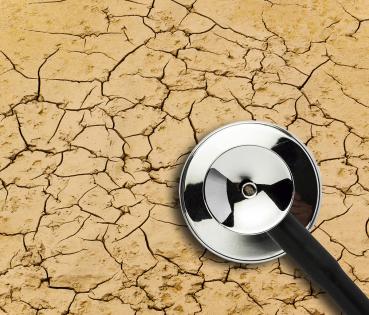
How will Europe's climate change if ocean currents slow down?
2025 may be a tipping point for climate change. The slowing of ocean currents could lead to a series of extreme weather events that would threaten the Northern Hemisphere.
For several years now, the behaviour of ocean currents has been a source of concern for the world's leading climate experts. Acting as a great conveyor belt that moves heat around the globe, the Atlantic meridional overturning circulation (AMOC) is a key element in preserving Europe's temperate climate. However, scientists have been warning for years: this system is becoming weaker.
Massive melting in the Arctic and Greenland is causing a massive influx of freshwater into this current, causing it to slow down. If this situation continues, or even collapses, the consequences for the climate could be enormous.
The Gulf Stream: the driving force behind Europe's climate
Europe's climate is not temperate by chance. The Gulf Stream, one of the most important parts of the AMOC, transports warm water from the tropics to the North Atlantic, moderating temperatures in countries such as Spain, France and the UK. On reaching the North, these waters cool down and sink, forming a deep current that returns south, completing a cycle that regulates the global climate.
But recent studies have shown that this huge natural machine is in jeopardy. The increasing rate at which glaciers are melting in Greenland is leading to too much freshwater in the ocean, reducing the density of the water and making it harder for it to sink. As a result of this, the current is slowing down and losing strength.
What are the consequences for Europe?
The slowing of the AMOC could be a key event for the future climate of the planet, completely transforming living conditions around the world. In the Northern Hemisphere, and especially in Europe, the consequences of this phenomenon could take the continent back into a little ice age like the one experienced between the 17th and 19th centuries. Possible consequences could include:
- Much colder winters: although climate change is often associated with extreme global warming, the slowing of the AMOC would bring cold weather back to Western Europe. Without the heat input from the Gulf Stream, cities such as London, Paris and Madrid could face colder winters, similar to those in Canada. This cooling, moreover, would be much stronger than the temperature increase we are currently experiencing (from an average increase of 0.2°C per decade, which is outrageous, to a decrease of 3°C over the same period). Over a time span of 100 years, regions such as Norway (which is already quite cold) could experience a drop in temperatures of more than 20°C.
- Stronger storms: The current also affects storm formation over the Atlantic. If it weakens, we could see stronger hurricanes and torrential rain on the European coast. We are already getting an inkling of this in the frequency with which we are increasingly enduring major floods and torrential rain in autumn, as was the case with the event in Valencia in 2024 where a stationary cold low caused catastrophic flooding.
- Droughts in southern Europe: on the contrary to the cooling in the north, southern Europe could become drier. Areas of southern Spain such as Andalusia and Murcia, and others in countries such as Italy and Greece, could see their summers become even drier, affecting agriculture and water supply. Problems such as large forest fires, which have become frequent in recent years, would become worse.
Is a total collapse a possibility?
Some recent studies suggest that the AMOC could collapse completely before the end of the century. In fact, a paper published in Nature in 2023 suggests that this could happen even before 2050, with some models predicting a tipping point in 2025. Other, slightly more optimistic studies estimate that, while we may see some consequences as early as 2025, the tipping point would be in 2057 and the effects would extend to 2095. In any case, what emerges from these studies is that the estimated date of the collapse of the AMOC is now getting much closer compared to traditional estimates that had expected that it would not occur until well into the 22nd century.
The main problem we face in dealing with this event is that, once the AMOC stops, getting it back into motion will not be easy. In the past, similar collapses have caused drastic climate changes, such as the Little Ice Age, which brought freezing winters to Europe and affected harvests for decades between the 16th and 19th centuries.
Can we prevent it?
Even now it is not too late to act. Experts agree that reducing greenhouse gas emissions is key to curbing global warming and preventing glaciers from melting and altering the ocean. At the same time, technological solutions to limit the impact on ocean currents are being studied, although none seem feasible on a large scale at this stage.
What is clear is that the slowing of the AMOC is no longer a problem that lies in the distant future. It is an ongoing process that could transform our climate within the next few decades. The question, then, is not whether it will affect Europe, but rather when and to what extent.




